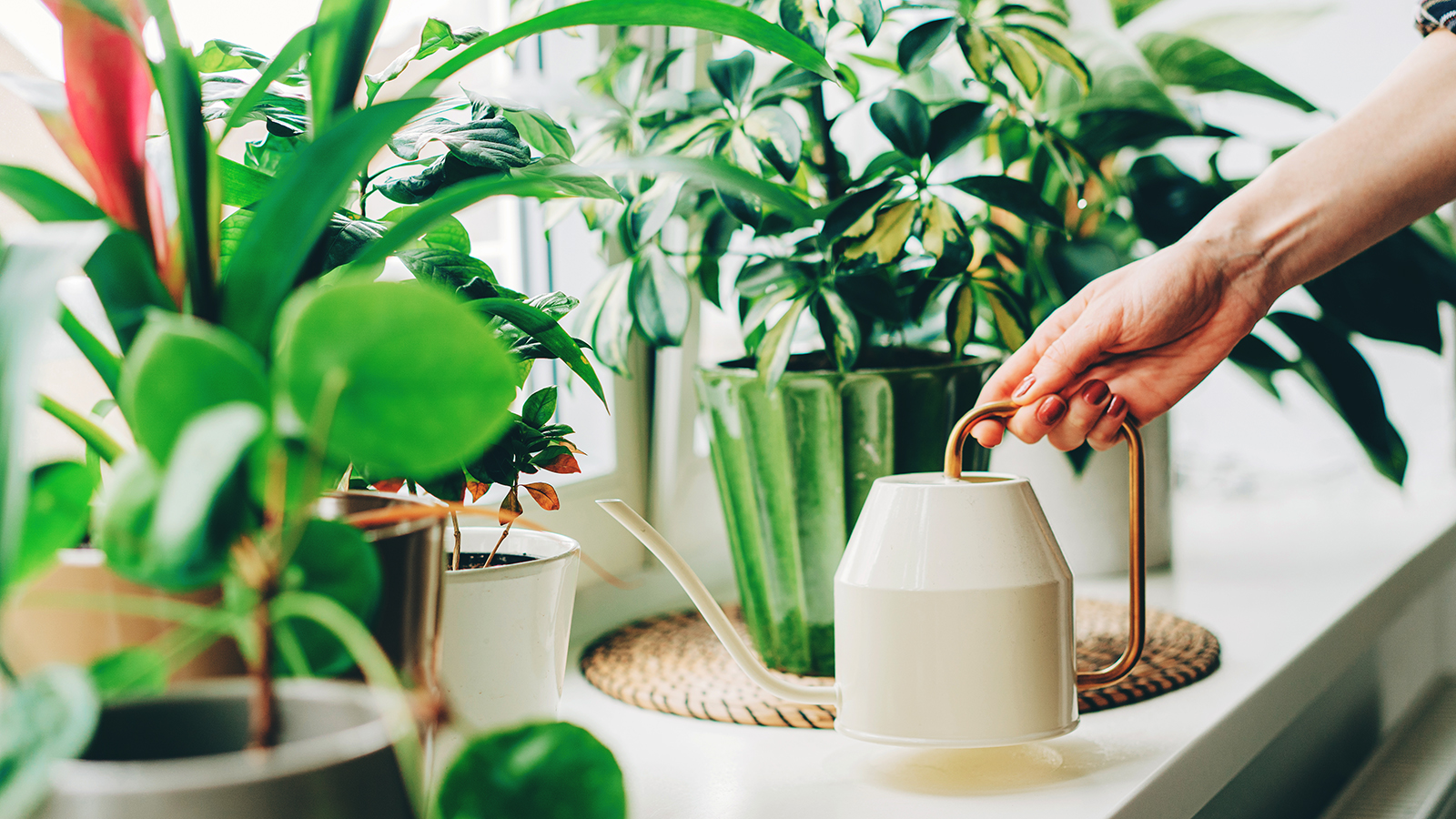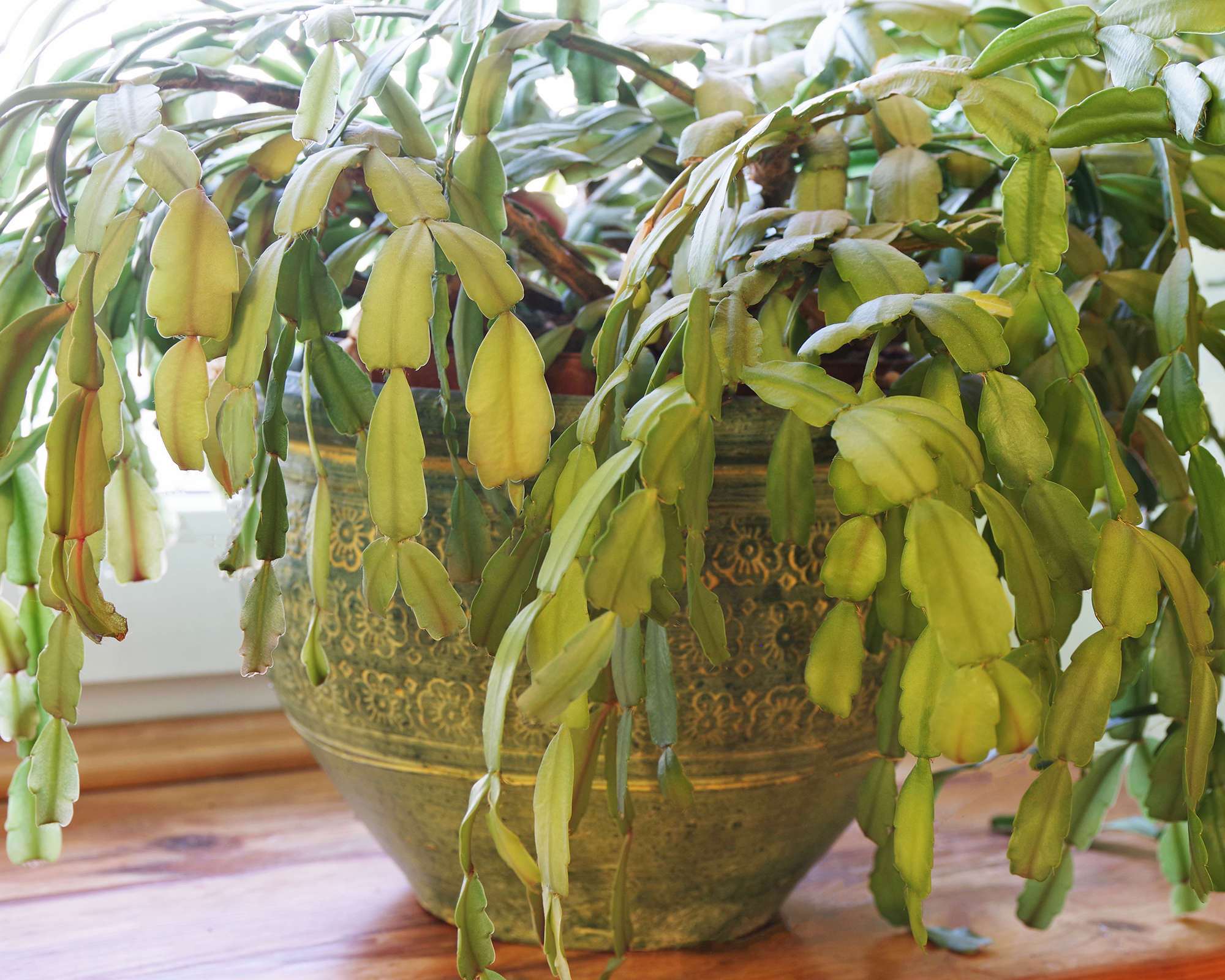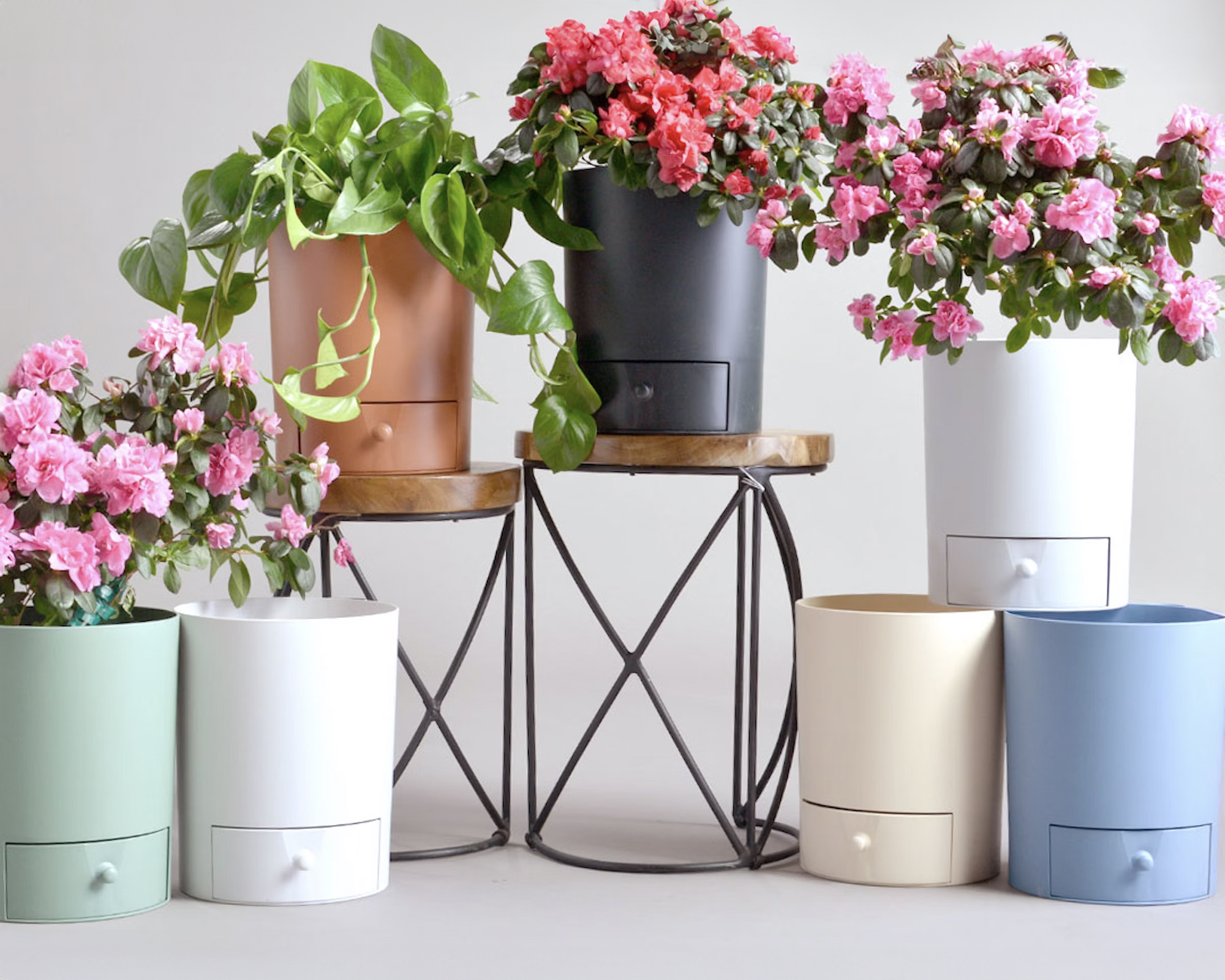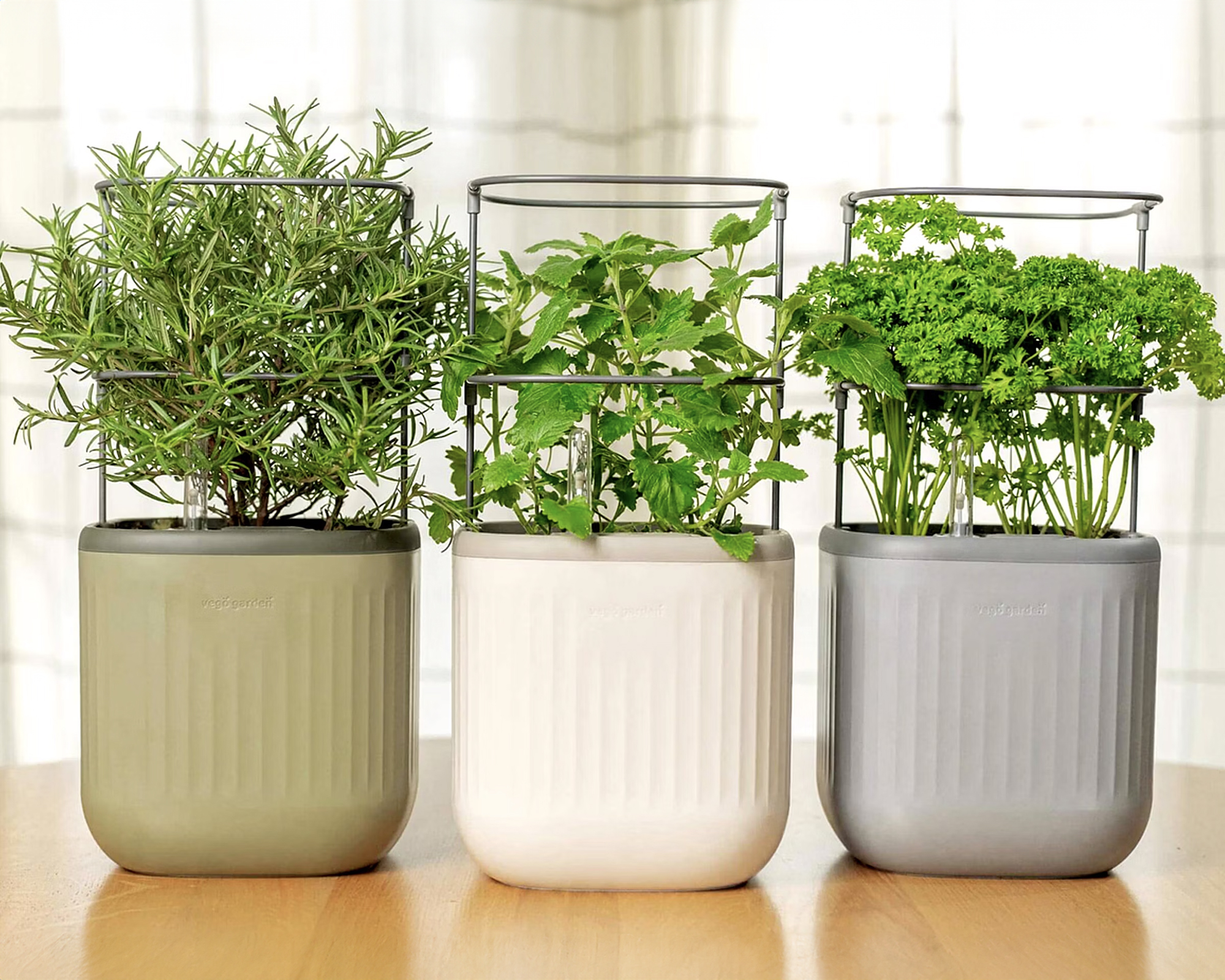3 ingenious products that keep your houseplants perfectly watered – so you'll never over or under-water again
Too much water? Too little? Here’s how to provide the right amount your houseplants need.


Houseplants are a popular form of home décor, and possibly the only décor item that is a living thing. They add a touch of nature to interiors, improve air quality, and can provide a much-needed boost to your mood. We plant parents do our best to see to our plants’ needs, but sometimes they meet an untimely end under our care. The cause? We misunderstand their watering needs.
Improper watering is the number one cause of houseplant death. Oftentimes, it’s not a lack of water but too much of it that causes them to expire. How often have you tipped the remnants of your water glass without checking the soil first? This mindless act could be leading to your plants’ early demise.
Whether you’re a seasoned green thumb or just beginning your houseplant journey, understanding how to water houseplants properly is essential to keeping your plants healthy and thriving.
Why Correct Watering Matters
Water plays a role in so many of a plant’s daily functions. It helps transport nutrients from the soil to the plants’ cells. Water is one of three crucial ingredients in photosynthesis, helping to turn sunlight and carbon dioxide into food and oxygen. The turgidity of its cells – and hence the overall upright habit of the plant – is due to having the proper amount of water. That’s one of the reasons why a plant wilts when it needs watering.
Too much water is a problem, too. A plant’s roots sitting in water can lead to oxygen deprivation, which in turn can cause root rot and fungal disease.
Finding the right soil moisture balance is key, and this is where many plant lovers struggle.
Scheduling vs Checking
Adhering to a plant watering schedule, such as “Sunday is watering day,” is where some plant parents go wrong. A schedule doesn’t take into account the plants’ environmental conditions – a warm, dry house or a stretch of cloudy weather, for example – and the different water needs of different plants.
Sign up for the Gardening Know How newsletter today and receive a free copy of our e-book "How to Grow Delicious Tomatoes".
Instead of sticking to a set schedule, it’s much better to check your plants' soil moisture regularly and water only when needed.

How to Know When Houseplants Need Water
Wilting might be an obvious sign your houseplant needs water. However, that wilted plant needed water several days before its cells became flaccid. The key to preventing wilting and the harm that wilting can cause is to routinely check your plants’ soil moisture.
As a general rule, check your plant’s soil moisture every few days – more frequently in warmer months and less frequently in cooler months. You can check soil moisture in a few different ways:
- The finger method: Stick your finger about an inch into the soil. If it feels dry, it’s usually time to water. If it’s still moist, wait a few more days.
- The soil color and texture method: Look at and touch the surface of your houseplant’s soil. Dry soil tends to look lighter and feels crumbly. Moist soil is darker and clumps together.
- The moisture meter method: Moisture meters give a quantitative assessment of your soil’s moisture. These are affordable tools that give a reading of the soil moisture level. The XLUX soil moisture meter, available on Amazon, is highly rated and inexpensive.
Signs You Are Over- and Underwatering
Your plants give you cues as to whether they are receiving too much or too little water. Pay attention to what your plants are trying to tell you by looking at and touching your plants on a regular basis.
You’re overwatering your plants if you find:
- Yellowing lower leaves
- Mushy stems
- Soggy soil
- Fungus gnats buzzing around on the soil surface
- A musty smell emanating from the soil
- Leaves dropping despite the soil being wet

You’re underwatering your plants if you find:
- Brown leaf edges or tips
- Wilting or drooping leaves
- Dry soil pulling away from the edges of the pot
- Leaf dropping off the plant
- Soil drying out very quickly after watering
Tools to Make Watering Easier
Now that you know the importance of watering and the signs that your plants’ water needs may be off-balance, let’s share three ideas for getting their water supply back on track.
1. PlantDoc Water Meter

Your plant can’t shout out “Hey, I need some water here!” but the PlantDoc Water Meters may be the closest thing to it. These simple meters are made from a biodegradable filter paper and hydrochromic ink that changes color with its surrounding soil moisture.
Insert the dry PlantDoc meter into your newly watered houseplant’s soil. As it feels moisture around it, the meter turns from white to a color. As the soil around it dries out, the meter will fade to white again, giving you a visual indication that the plant needs water.
Each moisture meter lasts about 2 months, depending on the type of plant (longer for cacti, shorter for large ferns, for example). PlantDoc moisture meters come in various shapes – kittens, mushrooms, tropical leaves – and are fully biodegradable at the end of their use.
2. Drain Drawer Plant Pots

Overwatering your plants is a messy ordeal, resulting in overflowing pot saucers, possible damage to furniture, and if you’re carrying your plants back and forth to a sink, it’s just a big bother. The Drain Drawer Plant Pot, available in the Gardening Know How Shop is designed with a drawer to collect overflow built right in. Water your plants as much as you like, let the pot drain for a bit, then pull the drawer out and empty the excess.
If you’d rather bottom-water your plants, just push the drawer in further – this closes the drainage holes and allows the plant to absorb water through capillary action. Drain Drawer is available as an 11-inch pot in seven colors.
3. Self-Watering Plant Pots

Self-watering pots incorporate a water reservoir and a built-in wicking system. Fill the reservoir once, and the wicking system delivers the water to the pot’s soil as the soil dries – just the right amount of water when your plants need it. Depending on the plants, you may not need to fill that reservoir for several weeks. Your luscious tropical indoor plants will thrive for weeks in the TruDrop Cup Tall Self-Watering Planter, available in the Gardening Know How Shop. Or maintain an indoor herb garden like never before with the EZ Self-Watering Herb Planter Box. Find many more self-watering pot options in the Gardening Know How Shop.
Regardless of which of these three ideas you use, cart your water to your plants in style with the Cleo Houseplant Watering Can and Sprayer, in the Shop. The Italian-made watering can is easy on your hands with its ergonomic design, and the matching sprayer with adjustable spray nozzle lets you spritz your houseplants with anything from a fine mist to a strong stream. And since they are so beautifully designed, you’ll feel fine leaving them on a nearby shelf as a reminder to check on your plant’s soil from time to time.

Ellen Wells is a horticultural communications consultant with 30 years of experience writing about all aspects of the gardening world.
She has worked for many of horticulture’s biggest brand names, writing blog posts, articles, press releases, and design and instructional pieces. Her previous roles include Senior Editor and Editor-at-Large for Ball Publishing.
Ellen is based in New England where she gardens in Zone 7a. She loves tending to flower-filled containers on the patio and puttering around her vegetable garden.